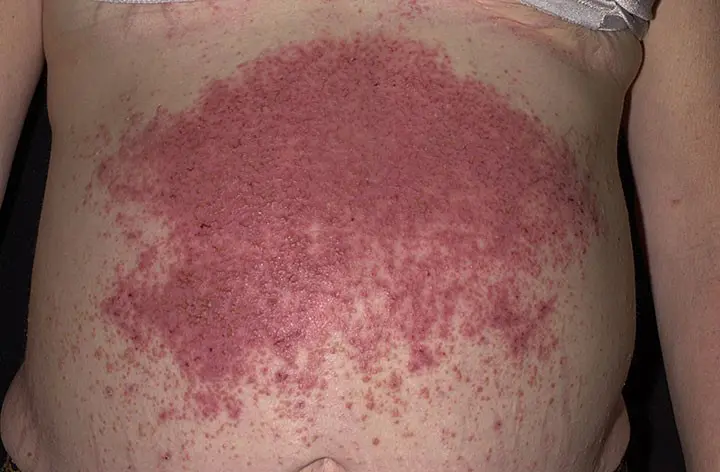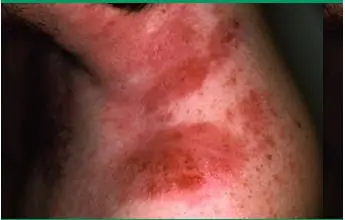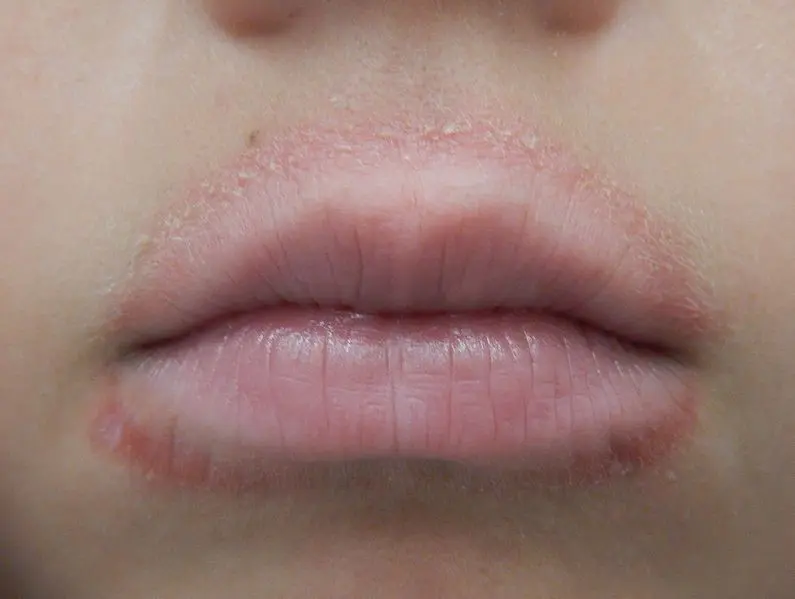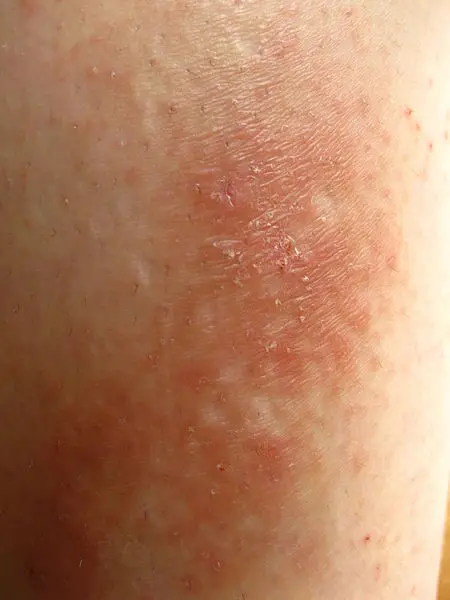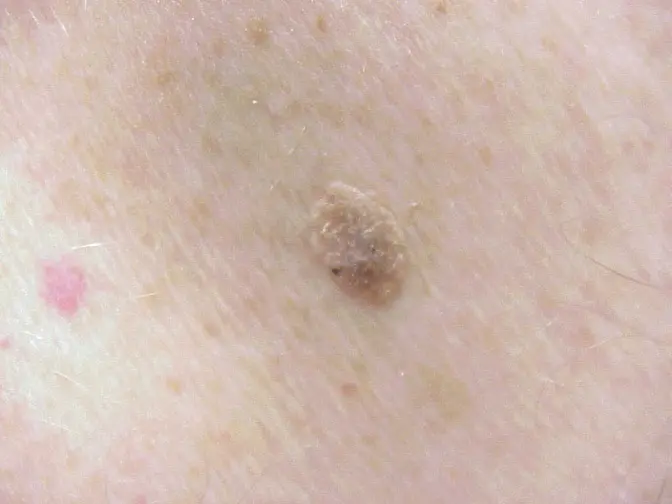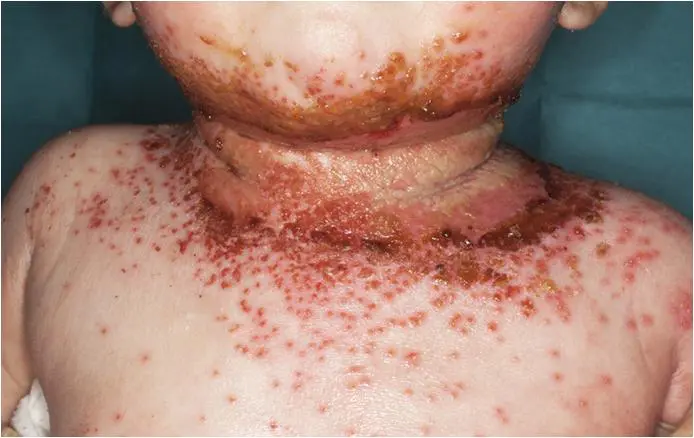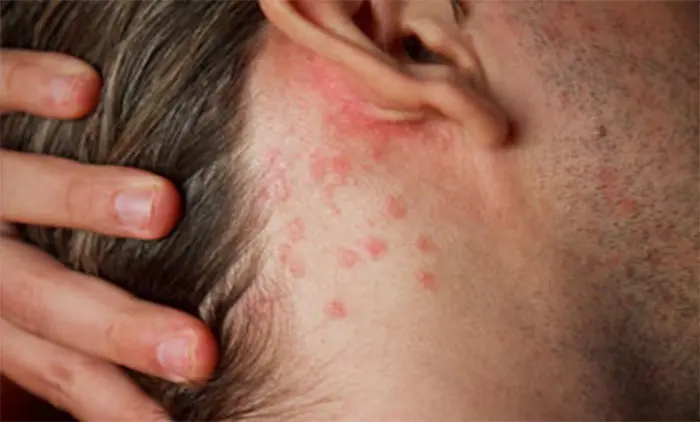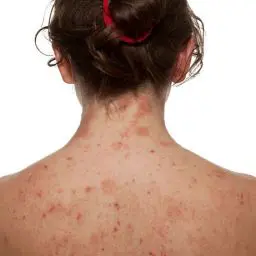Dermatitis
Medical Dermatology
Dermatitis is a general term for skin inflammation. There are many types of dermatitis – each with their own causes and treatments.
Dermatitis
Medical Dermatology
Dermatitis is a general term for skin inflammation. There are many types of dermatitis – each with their own causes and treatments.
Contact Dermatitis
Contact Dermatitis is a rash caused by contact with an irritating substance. This can be either an allergic reaction to triggers such as latex or poison ivy or a response to an irritant such as bleach or pepper spray. Treating contact dermatitis involves washing the affected area and identifying the substance that is causing the rash. A patch test can be performed by your dermatologist to help determine the irritant, though most cases of contact dermatitis do not require medical attention. However, it is important to seek the help of a medical professional if the rash is large, near the mouth or eyes, or does not improve with over the counter topical steroids and antihistamines, which can be useful in reducing inflammation and itching but do not cure the rash.
Eczema
Eczema is a form of dermatitis characterized by red, itchy, and dry skin. It is more common is children than adults, and commonly appears on the face, elbows, knees, hands, or feet. The cause of eczema is not well understood and manifests differently in each affected individual .However, it is known to be linked with genetics and allergic conditions such as hay fever and asthma, and it is made worse by many triggers such as chemical irritants found in household cleaning agents, scented shampoos, certain foods, allergens such as pets and pollen, hot weather, certain bacteria, viruses, fungi, high or low humidity, and stress. Most eczema can be treated at home with good hygiene and frequent application of hypoallergenic moisturizer. Seek medical attention if your eczema is not well managed with home remedies or if the eczematous patches become infected.
Seborrheic Dermatitis
Seborrheic dermatitis is a condition in which affected skin becomes red and scaly. It most often affects the scalp, resulting in the formation of dandruff, but can also affect any areas of oily skin such as the face (especially around the nose), chest, and back. Seborrheic dermatitis has many different causes, most commonly poor hygiene, and a link between this rash and certain types of fungi have been discovered. It is completely benign but can be a cause for cosmetic concern. If you think you might have seborrheic dermatitis speak with your dermatologist. Most treatment plans include keeping the affected area clean and washing with an anti-fungal shampoo, though this can vary depending on what is causing this condition.
Stasis Dermatitis
Stasis Dermatitis is a dark red and scaly rash that is often painful or itchy and, in severe cases, includes ulcers. It appears when blood pools in the legs due to insufficient venous circulation and causes the feet and ankles to swell. This chronic swelling damages this skin, especially around the ankles, resulting in the formation of this rash. The treatment for this rash is topical steroids, which helps reduce inflammation, and compression stockings, which help the body reduce swelling.
Perioral Dermatitis
Perioral dermatitis describes a rash of red bumps that appear around the mouth, nostrils, or eyes. It is unknown why certain individuals are more likely the develop this condition than others, but there are many potential triggers including certain bacteria, chewing gum, lip licking/sucking in children, dental products, topical steroids, certain spices, hormonal changes, certain medications, and autoimmune diseases. This form of dermatitis is rarely serious and usually disappears without intervention in a few months. Seek medical attention if the rash becomes infected.
Neurodermatitis
Neurodermatitis, also known as lichen simplex chronicus, starts with an itchy patch of skin. When this skin is scratched it becomes even itchier causing a cycle of itching and scratching that results in patches of thick and inflamed skin. This condition is not dangerous or contagious but it is difficult to treat. Successful treatment requires that the affected individual stop scratching at the itchy skin, breaking the cycle propelling this disease. A topical steroid may be prescribed to help ease the itching.
Dermatitis Herpetiformis
Dermatitis herpetiformis got its name from its similar appearance to herpes, but in fact it is actually a symptom of coeliac disease. It is characterized by patches of intensely itchy red blisters. The severity of the rash is proportional to the amount of gluten ingested. The treatment for this rash is a gluten-free diet and the itching is very successfully treated with the antibiotic Dapsone. Dermatitis is not a specific disease but rather it is a term that can be used to describe any kind of rash. The most common forms of dermatitis are listed above, but any condition that inflames the skin has a component of dermatitis.


